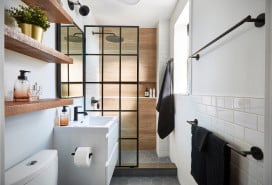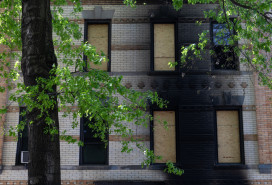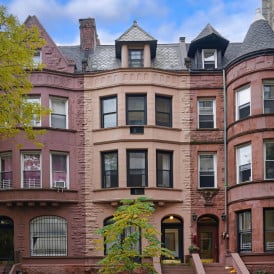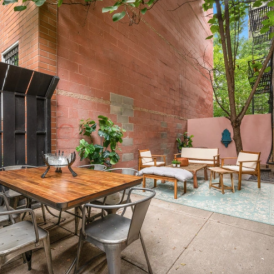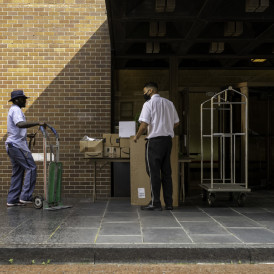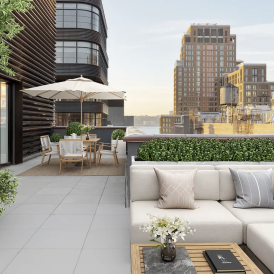Brooklyn hits second-highest median sales price on record
- Median sales price for Brooklyn jumped by 9.9 percent to $989,000 in fourth quarter
- Deals increased in Brooklyn for the first time in 2.5 years as per the Elliman Report
- Queens sales dropped for the first time in four quarters, falling by .3 percent

“Both Manhattan and Brooklyn saw sales growth after a long period of flat to declining sales activity,” said Jonathan Miller, of appraisal firm Miller Samuel.
iStock
The median sales price for Brooklyn properties in the fourth quarter of 2024 shot up by 9.9 percent to $989,000 compared to the year-ago quarter. It was the second-highest median sales price on record, according to the latest Elliman Report for co-ops, condos, and one- to three-family houses in Brooklyn.
Prices were fuel by the first increase in sales in 10 quarters; deals were up 6.8 percent over a year ago. A fourth quarter sales report for Queens was also released.
“Both Manhattan and Brooklyn saw sales growth after a long period of flat to declining sales activity,” said Jonathan Miller, president and CEO of appraisal firm Miller Samuel and author of the report. “Many buyers have been waiting three years.”
That’s a statement about how buyers feel about the economy, Miller said, adding that consumer surveys indicate more optimism about housing and the economy in 2025.
Brooklyn inventory climbs
Listings in Brooklyn increased annually for the third time, rising 4.6 percent.
The median price for Brooklyn new development was down 4.3 percent to $1,055,000, but this is not because developers are building smaller units. New development buyers have been gravitating toward smaller units to stretch their dollars, a trend seen over the last several years, Miller said.
All price metrics for one- to three-family houses in Brooklyn rose last quarter, including median sales price, which was up 18.2 percent to $1,200,000.
Deals fall in Queens
In Queens, the median sales price rose year over year for the fourth time, an increase of 3.7 percent in the fourth quarter to $700,000, as per the Elliman Report.
Deals were down for the first time in four quarters, falling by .3 percent.
Listings have declined annually every quarter for two years; they were down by 35.6 percent last quarter.
More signed contracts in Brooklyn
Compass also released fourth quarter market reports for Brooklyn and Queens noting that “buyers have come off the sidelines, making amends with mortgage rates and engaging with the market.
“With the election in the rearview mirror encouraging many to move forward, we saw [Brooklyn] buyers begin to close with about 1,560 contracts signed, an overall increase of 6.6 percent year-over-year,” the report said.
Luxury market ‘outperforms’
SERHANT shared fourth quarter reports for Brooklyn resales, Brooklyn new development, and the Long Island City condo market.
The luxury market “outperformed the rest of the market,” according to Coury Napier, SERHANT director of research, who wrote that sales of properties priced above $2 million saw a surge in deals.
Townhouse deals accounted for 51.7 percent of the Brooklyn market share and increased by 10.7 percent year over year, Napier said.
Inflation concerns for 2025
In her firm’s fourth quarter report, Bess Freedman, CEO of Brown Harris Stevens, noted that “the Brooklyn apartment market finished 2024 on a positive note.” For example, there was an uptick in closings thanks in part to lower mortgage rates.
While there’s reasons to be optimistic about 2025, including stronger-than-expected economic growth, areas for concern include stubborn inflation.
“Despite the Fed’s aggressive rate hiking campaign from 2022-2023, inflation remains above their target annual rate of 2 percent. Unless the Fed sees better progress on inflation, expect fewer rate cuts in 2025,” Freedman said.
Where inventory is rising and falling
Corcoran’s fourth quarter market report zeroed in on inventory.
The area encompassing Brooklyn Heights, Cobble Hill, Dumbo and Downtown Brooklyn had the steepest decline in inventory. The report noted it was down 22 percent due to dwindling new development listings. Resale condo and new development listings jumped in South Brooklyn.
Listings for two- and three-plus bedrooms grew with double digit percentages; studio and one-bedroom inventory saw smaller percentage increases.
You Might Also Like











